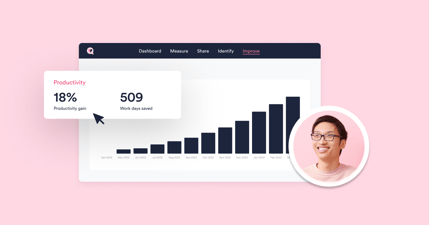Experience level agreements (XLAs) are an increasingly popular topic in IT service management (ITSM). However, the XLA term has yet to receive a single agreed-upon definition for the IT industry to follow, leading to many companies using their own definition. To help, this blog explains more about the spectrum of XLA definitions, including our own insight.
How XLAs are defined
For the first definition of experience level agreements, it seems sensible to begin with what the “Founding Fathers” of the term, Giarte (operating out of Amsterdam, The Netherlands), say. It describes an XLA as less of a traditional or heuristic agreement, such as service level agreements (SLAs), and more focused on working to achieve desired outcomes. The Giarte statement that an “XLA is a guide and not a judicial document” expresses this well.
Find out more about Giarte’s take on XLAs here.
Deptive, a New Zealand-based company, explains that XLAs swing “the focus onto the employee experience to discover how employees actually find the experience of utilizing the technology.” It also states that an XLA “shifts the focus from service reviews and penalties to continuous service and improvement using employee feedback and hard data to drive ongoing improvement and boost overall satisfaction.”
Giarte’s and Deptive’s definitions of XLAs both talk about leaving sanctions, service reviews, and penalties (which are typically found in SLAs) to measure outcomes and employee experience.
Find out what else Deptive has to say on XLAs here.
However, Alan Nance of Experience Collab approaches XLAs from a different angle. This is “the outcomes that determine the consumer experience central to their design efforts.” It creates a greater focus on service management and differs from SLAs that “primarily reflect delivery perspective.”
Find out more about Alan’s definition of XLAs here.

"SLAs measure the process - XLAs measure the outcome and value" - Sami Kallio, CEO HappySignals
Hannah Price, from TOPdesk, wrote in an ITSM.tools article that explains XLAs as “How, in the end, did the customer feel about how they were treated?” FreshService strengthens this definition by claiming that the experience and emotions outweigh SLA metrics, with “customer experience taking precedence over hard technical data.”
Read the ITSM.tools article about what XLAs are here.
Lakeside Software states that XLAs are set contracts between a service provider and a customer. However, it now focuses on the quality of employee experience with the provider’s services.
Find more information on Lakeside’s XLA definition here.
In contrast, Ahmed Al Hadidi, from Pepsico, created a “Roadmap for a Customer-Centric Service Desk – From SLA to XLA.” He makes a great statement that if your organization is just using SLAs, the acronym stands for “Secrets, Lies and Assumptions” as you do not truly understand what your end-users are experiencing.
What do XLA metrics look like?
HappySignals metrics measure two things:
- The happiness of end-users after each incident or service request. This focuses on the end-user’s perception of experience from IT services.
- The time perceived lost due to a certain issue or request. This measures how efficient a service has been.
In her ITSM.tools article, Hannah Price explains that XLA metrics cover a service and not a product, meaning that the metrics can still be tangible. But remember that people are “guided by emotions, not numbers.”
Adding simple surveys or measurement tools can help with XLA measurement. Hannah gives an example of an XLA key performance indicator (KPI): “keeping your call closure satisfaction rate above 4.5” out of 5 stars.
Giarte suggests that XLA metrics focus on multiple aspects:
- The proactivity of provided services
- The extent to which they help clients accelerate the time-to-market
- The number of relevant insights provided
- The knowledge levels of employees
- The general quality of services provided.
Finally, Nexthink approaches XLAs through a “Digital Experience Score – an XLA-based metric sourcing both technical and experiential data to provide a holistic overview of end-users’ experiences with the overall services.”
XLAs in summary
There are multiple ways to describe experience level agreements and how to best measure the XLA metrics. However, based on the above definitions, most people define XLAs as focusing on outcomes, feelings, or experiences rather than processes. And the difference between SLAs and XLAs is that XLAs are focused on improving the end-user experience, whether through design, service management, or service experience.
If you found the topic of this blog post interesting, please read our extensive guide on Experience Level Agreements.




